And in the morning we went to Escorial - the famous palace of the Spanish kings in the suburbs of Madrid. A few years ago I read several books by the famous English travel writer Henry Morton. In his description of his travels in Spain, I remember most of all the chapter about Escorial - a huge, gloomy and beautiful palace-monastery of the Spanish Habsburgs.
I definitely wanted to see him.
I don’t want to rewrite Morton’s book, but I’ll still tell you a little about the history and my impression of Escorial. Unfortunately, there will be few photos in this post, there will be more letters.
From Madrid to Escorial
First, a few words about how to get to the palace, as well as about Madrid transport. In Madrid, as in many other European cities where I have been, commuter trains in the city center go underground, and often even run through the same tunnels as the city metro. In Barcelona, for example, there are already three independent networks of urban railway lines.
In Madrid, at the Principe Pio station, where we lived, there is both a metro station and an electric train station. You have to go to Escorial by train, and there is no direct train. You have to go with a transfer: either by two electric trains, or first by metro, and then by electric train.
Having studied the schedule, we chose the following route: we took the C-10 branch to Villalba station, and there we changed to the C-8a branch and reached the El Escorial station.
Buying a ticket turned out to be a big problem :). At the box office, they explained to us in Spanish that you have to buy a ticket for commuter trains at an automatic kiosk. Well, perhaps they explained something else to us, but at least they didn’t sell tickets, neither for cash, nor for a card, but they energetically waved their hand and said something about the machine. The machine gun could speak English, but then some officer in uniform approached us (judging by the presence of a holster, it was a guard of the railway station). And he began to explain in great detail how to buy a ticket. In Spanish. He switched the machine's interface back to a language he understood, and spoke to us very loudly and slowly so that we could better understand. Then our stroller did not fit into the turnstile, and he took us to the turnstile for bulky luggage. Then he took us to the platform and, when the train approached, he energetically shouted at us from afar and waved his hand for us to sit down. In general, thanks to him! Gracias! He told us so much, but we, unfortunately, did not understand anything. I need to learn languages :(
The train quickly left the city and we drove through deserted hills with absolutely yellow sun-scorched grass and sparse trees. The palace is located in the foothills of the Sierra de Guadarrama, so towards the end of the journey, the train began to climb up.
El Escorial
At the El Escorial train station, we jumped on a bus (which wasn't easy to do, given that we had a stroller with us), which took us from the local train station to the bus station for 1 euro. It was completely superfluous, it was perfectly possible to walk and walk.
Once the palace was built in a completely wild and uninhabited place, but gradually a town with the proud name of San Lorenzo El Escorial grew up around it.
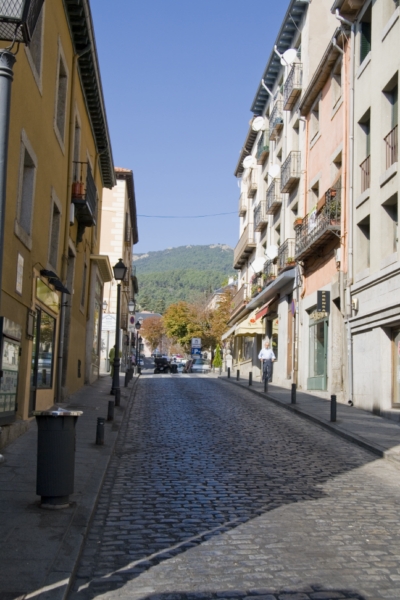
The main reason for the existence of this settlement has always been to serve the palace and the needs of its inhabitants. Now they serve tourists - there are a lot of small hotels, souvenir and antique shops, as well as restaurants.
A long staircase leads from the city to Escorial.

The palace is huge and does not fit into the camera.

The Escorial was built in 1563-84, and for its time it was a completely unique architectural ensemble in size. It does not at all give the impression of a building built in the 16th century. Its severity and dimensions are such that one might think that it was built in the 20th. It was erected under King Philip II. It was conceived as a monastery and a palace, and most importantly, as a pantheon of the Spanish kings, and above all, Philip's father, Charles. According to the Spanish numbering, he was Carlos I. But he was also the offspring of the Austrian house of Habsburg and Charles V - Emperor of the Holy Roman Empire. If you watched a good English television series The Tudors, then Emperor Charles appears there as a gallant man with a famously twisted mustache, who woo Mary Tudor when she was still a little girl, and then, after about thirty years, marry her his son Philip. Charles V owned an absolutely gigantic empire, almost unique in history, which was almost impossible to grasp with the power of thought of one person. Under his rule were Austria, part of Hungary, part of Germany, the Czech Republic, all of Spain, southern Italy with Sicily and Sardinia, and all the American lands of Spain. He led the Catholic empire, which opposed the Turks and the newly emerged Reformation. During his reign, the Turks besieged Vienna, in Germany, France and England there was a struggle between Catholics and Protestants, Cortes and Pizarro conquered Mexico and Peru, the French and Spaniards fought for Italy. Charles had a lot of work to do, he constantly traveled around his empire, too much required the personal participation of the emperor. But he did not swim across the ocean. This system was very unstable, it brought together nations too far from each other, whose interests had little in common. But Charles V managed to cope with his difficult role for quite a long time. From the age of thirty he began to suffer from gout, and by the age of fifty he was already almost an invalid. And here he committed a very uncharacteristic act for kings - he divided power between his younger brother Ferdinand and his only son Philip, and he himself went to live in a monastery. Dying, he bequeathed to his son to build a family pantheon. Philip, as an obedient son and a zealous Catholic, fulfilled the will of his father by building Escorial - a giant palace-monastery and the tomb of the Spanish kings.
An impressive queue lined up at the entrance to the museum, and here, as in the Prado Museum, the things of visitors were very carefully examined. When we got inside, it was time for my daughter to sleep, which we actually counted on. But it turned out that here it was necessary to go down and up steep stairs, with a child sleeping in a stroller it was impossible. Therefore, we had to split up, I went to the museum, and my wife and daughter went for a walk.
As a result, I had only an hour left for the entire Escorial. The palace, as I said, is absolutely huge, and so is the exposition of the museum. So I quickly ran, trying to get at least some idea of what I saw.
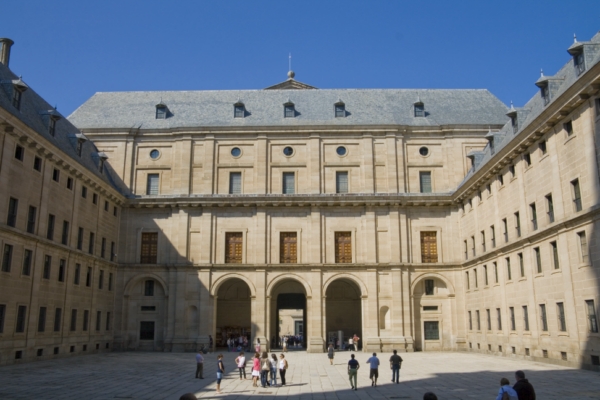
Museum visitors are led along a long, long circle, which sometimes forks and it is not always clear (especially when you run) where which road leads.
In the first part of the museum, the exposition is devoted to the history of the construction of the palace. It was done in great detail: sketches, drawings, old engravings and huge layouts. Then the museum turns into an art gallery, where there are many works of old masters: Velazquez, El Greco, Titian and many others. This is really a collection of the Spanish crown, Philip II began to collect it, his descendants continued, and then the kings from the House of Bourbon. Then you find yourself in the living quarters of the palace, the memorial rooms of long-dead kings. Interiors from different eras have been preserved here.
Escorial has one of the largest and oldest libraries in Europe. Its unique feature is that all the books in it stand with their spines inside, it seems that this way the books are better preserved. True, then the question arises of how to search for the right book in this library. For some reason, I didn’t get into the library, either I ran past, or it was closed.
But the most impressive, of course, is the tomb of the kings. In general, I am always surprised by the attitude of Catholics towards death. Directly under the altar of the church is an underground chapel, on the walls of which coffins are installed. Here lie the Spanish kings and those queens who were able to fulfill their main duty and give birth to boys, heirs to the throne. The chapel and coffins are decorated with gold and jasper. Now there is electric light, but I imagine how it all must have looked by candlelight. Morton writes that it was a tradition for kings to come here and pray, pray at the site of their future grave. Kings lie on one side, queens on the other. There is still enough space here, the Spanish monarchy expects to rule for a long time.
Nearby is another tomb, much more cheerful in appearance, but less honorable: princes who did not take the throne, illegitimate children of monarchs, as well as queens who did not give birth to boys are buried here. It is more cheerful because instead of gold there is marble, and light streams from the windows, and all this does not look so gloomy. There are many tombstones and bas-reliefs, small sarcophagi of those of the princes and princesses who died in infancy. In one of the niches there is a large sculpture on the tombstone of Juan of Austria, the illegitimate son of Charles V, half-brother of Philip II. In one of the clauses of his will, Charles recognized his bastard, whose existence no one knew, except for the king's valet, in whose family the boy was brought up. Philip, who was 19 years older than his bastard brother, respecting his father and his will, accepted the boy into the royal family. Juan received an education and all the rights and privileges of a true infante. Don Juan in European historiography is presented as "the last knight of Europe." He gained fame as the winner of the Battle of Lepanto. It was one of the greatest naval battles in human history. In addition, his early and sudden death added tragedy and romance to the description of his personality. Juan's mother was a German Barbara Blomberg, that is, in his veins, most of the blood was German. He was blond, handsome and tall.
And, of course, his chivalry was more of a myth. Here, for example, the dictionary of Brockhaus and Efron, from where Wikipedia borrowed an article about Juan of Austria, writes: ordinary games. And even: “He was ashamed of his mother and her family, he wanted to be only the son of the emperor, lured his mother to Spain to lock her up in a monastery, and ordered her son from a legal marriage to be treacherously hidden somewhere. Don Juan was heartless towards both his lovers and his numerous illegitimate offspring.” However, his glory as a winner at Lepanto, and the glory of a fearless warrior made him a hero of Spain, and in his time a hero of the entire Christian world. In those days, it didn’t matter to anyone how they treated their women, the same “chivalrous” Richard the Lionheart was probably even more of an “asshole”.
The Battle of Lepanto was of great importance for the Christian civilization and this significance was very well understood by the entire “Western” world. After the time of the Crusades, Christians increasingly lost their positions in the Mediterranean. In the Muslim world, the Turks took over the dominant position instead of the Arabs. And the Ottoman Empire was slowly creeping into Europe. In the Balkans, the Turks had already occupied half of Hungary and were threatening Vienna itself. The Ottomans took over all the Greek islands with the exception of a couple of Ionian. Muslim pirates kept the entire Mediterranean at bay, even reaching deep into the Adriatic. In 1571, a huge squadron of the combined forces of Venice, Spain, Malta, and many other Italian cities headed for the East. The goal of the Christians was to help Cyprus, which belongs to Venice. However, while the allies were gathering the fleet, Cyprus had already fallen. Huge resources were involved in the battle on both sides. In those days, the main type of sea ship was a rowing galley. In technical terms, they have not been much changed since antiquity. The sailors were just beginning to use artillery, and artillery played a very important role in the Battle of Lepanto. In total, more than 170,000 people from both sides took part in the battle, according to historians.
The battle took place on October 7, 1571 at the entrance to the Gulf of Corinth. The Christian fleet moved along the western coast of Greece from the north of the island of Corfu. And the Turkish came out of the Gulf of Corinth. The meeting of two huge fleets was unexpected for both sides. Both fleets, according to the then rules of naval battles, lined up in a line opposite each other. Don Juan of Austria and his Spanish ships were in the center, as G. Morton writes, “on a flagship moving towards the enemy with a developing papal banner, on a gun platform to the sounds of bagpipes in a golden uniform, don Juan .. danced a galliard.” I don’t know what kind of galliard dance, but the young Spanish naval commander behaved bravely in this battle. The Venetian galleys with their artillery disabled a large number of Turkish galleys in the center, and then the galleys of the opponents met in a cruel and bloody boarding battle. In hand-to-hand combat, the experienced Spanish soldiers, as well as the German mercenaries of the Italian ships, proved to be much more resistant than the Turks. In addition, the Christians were better armed, the Turks almost did not use firearms. The decisive role was also played by the fact that the Allies left about 30 ships in reserve under the leadership of the Spanish officer Santa Cruz. The engagement of this reserve turned the tide of the battle. In order not to be captured, the commander of the Ottoman fleet, Ali Pasha, committed suicide. The victory won by Juan of Austria on October 7, 1571, was decisive: a strong enemy fleet was almost completely destroyed. The news of this victory aroused indescribable rejoicing throughout Europe. Turkish losses amounted to 25,000 dead and 3,500 captured sailors, in addition, the Allies freed 12,000 Christians from slavery, who were used as rowers on Muslim galleys.
However, apart from the capital destruction of enemy ships and soldiers, the allies did not derive any other successes from this brilliant victory. Spain, Venice and the Pope had too different plans and goals that came into conflict. Don Juan wanted to continue the war at sea and go to liberate Cyprus, other islands of the Greek archipelago, and perhaps Constantinople itself, but his patron, King Philip II, was against such decisive action. In the process of disputes and the division of booty, time was lost, bad weather set in, and the fleet was disbanded for winter quarters instead of building on success. The following year, the united Christian fleet could not finish off the Turkish fleet, the Turks, remembering the lesson of Lepanto, all the time evaded the general battle. And by the end of 1572, Venice concluded a separate peace with the Ottoman Empire, abandoning Cyprus.
The Spaniards of Juan of Austria continued the war with the Turks in Algiers.
Despite the fact that the battle of Lepanto was not decisive, it was the first major defeat of the Turks in many years. Stronger and more powerful than at the end of the 16th century, the Ottomans have never been.
At 31, Juan of Austria went to the Netherlands to act as governor of this then Spanish province. And some time later he died under rather mysterious circumstances.
Let's go back...
To be honest, all these crypts and tombs really leave the biggest impression. Going outside, it was nice to look at the surrounding mountains and the sun.
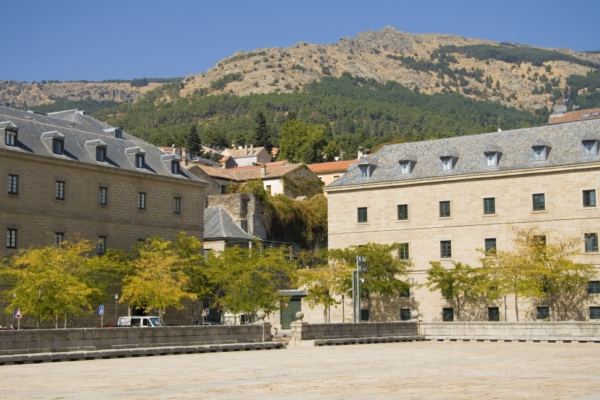
The Escorial is surrounded by beautiful gardens.
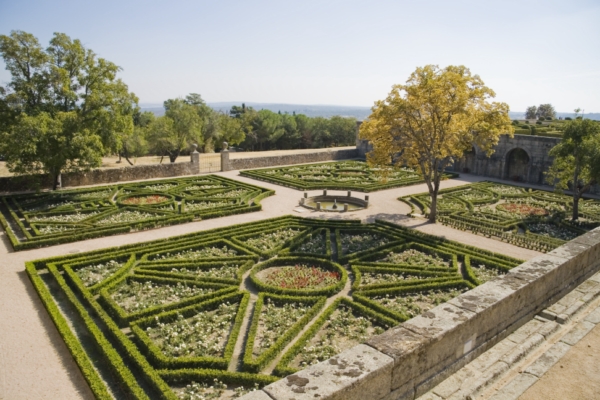
After visiting the palace, I had lunch at a local restaurant. I really love soups, and in general I think that a real dinner should begin with soup. But Spanish cuisine did not please us with soups, a giant portion of Sopa de Castellana turned out to be hardly edible. With all my efforts, I couldn't eat it. That's what Castilian soup is - lots and lots of sliced bread, slices of ham are shove into the meat broth and a couple of raw eggs are broken. A traditional peasant dish, I think the Habsburgs didn't eat it. Here lamb or fish is a completely different matter, the Spaniards know how. Surprisingly, in Madrid and its environs, which are quite remote from the sea, in many restaurants you can choose fresh fish, as if it were happening on the seashore.
We walked back to the station. The road goes through a huge and very beautiful park.

The park is spread around another local attraction - Palacio del Principe. The building was built in the 18th century; it served as a residence for the heir to the throne, the future King Carlos IV. It is good to go back from Escorial to the station, the road constantly goes down with a good slope. But if we walked there, then the stroller would have to be pushed all the way up a tangible mountain.
There were very few people in the park, and it is really very beautiful.
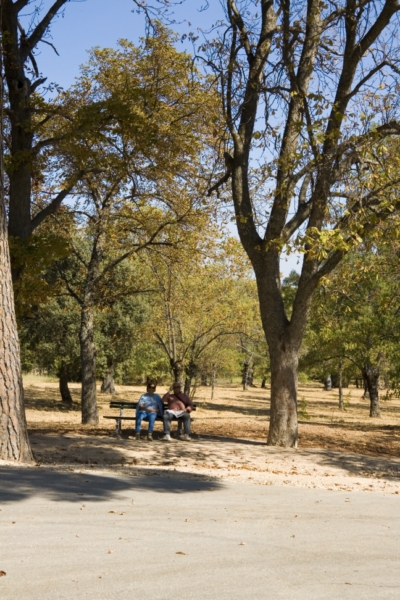
Well, and finally, one more photo, and one more bike. A sign with a crossed-out dog hangs at the entrance to the park. In this regard, we observed a terribly funny scene. Two homosexuals were walking through the park with a small dog. Seeing them, a guard in a black uniform with a very brutal expression came out of a booth near the Palacio del Principe. He sternly demanded that they leave with the animal. One of them grabbed the dog, raised it in his arms and hugged him, as if protecting him from attacks. The second, he began to prove something hot to the guard, like, he’s small, he won’t bite anyone, well, in general, there’s something in Spanish. And the uncle answered “Prohibido!”, and holding the baton with one hand, the other pointed towards the exit. And so they went to the exit, embracing the dog in their arms, misunderstood and beautiful.
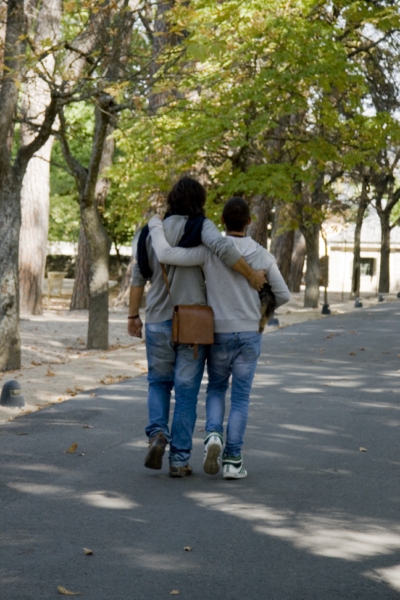
And we walked behind with a camera and laughed ...
